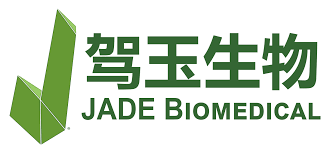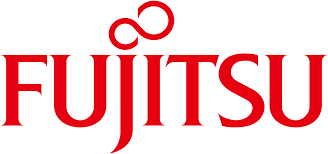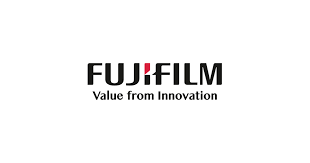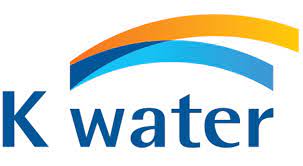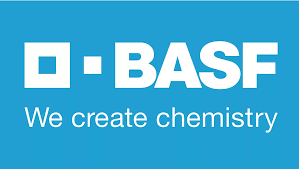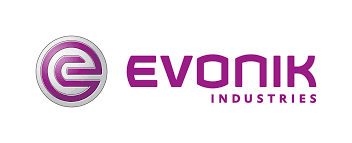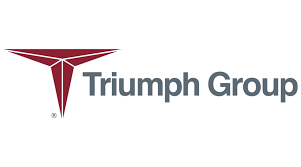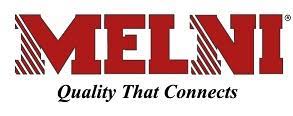Global Plastic Waste Management Market Size, Share & Trends Analysis Report, By Service (Landfills, Collection, Recycling, Energy, Recovery), by Polymer (PP, LDPE, HDPE, Polyvinyl chloride, Terephthalate, Others), by Source (Commercial, Industrial, Residential), by End-Use (Packaging, Construction, Textile, Consumer product, Transportation, Building & construction, Electrical & electronics, Others), By Region (North America, Europe, APAC, and Others), and Segment Forecasts, 2024 – 2032
- Report Summary
- Table of Contents
- Segmentation
- Methodology
- Download Sample
The waste plastic management market refers to the industry that encompasses the collection, transportation, processing, recycling, and disposal of plastic waste generated across various sectors. It involves the implementation of strategies and technologies aimed at mitigating the environmental impact of plastic pollution. Key activities within this market include the development and operation of recycling facilities, waste sorting and segregation, adoption of sustainable disposal methods, and the promotion of circular economy principles to minimize the generation of plastic waste. The market addresses the challenges posed by the increasing volume of plastic waste globally, aiming to promote environmental sustainability, reduce the reliance on virgin plastics, and foster responsible waste management practices across industries and communities.
Global Plastic waste management market was valued at US $ 27.7 Billion in 2023 and is expected to reach US $ 37.1 billion by 2032 growing at a CAGR of 3.3% during the forecast period 2024 – 2032.
COVID -19 Impact
The COVID-19 pandemic has brought both challenges and opportunities to the waste plastic management market. On the positive side, the heightened focus on hygiene and safety during the pandemic has led to increased use of single-use plastics, creating awareness about the need for effective waste plastic management. Governments have responded by implementing new policies to address plastic pollution, and there has been innovation in recycling technologies, particularly for the safe disposal of pandemic-related plastic waste.
However, the pandemic has also posed challenges. Lockdowns and disruptions in supply chains have resulted in reduced recycling activities in certain regions, creating backlogs in plastic waste processing. The surge in the use of single-use plastics, including masks and packaging for takeaway food, has increased the overall volume of plastic waste, straining waste management systems. Budget constraints, a result of economic challenges, may have deprioritized investments in sustainable waste management practices, impacting the growth of recycling infrastructure. Additionally, shifts in consumer behavior, such as increased reliance on online shopping, have contributed to a rise in plastic packaging waste, presenting further challenges for waste plastic management.
As the world navigates the post-pandemic era, the waste plastic management market faces the task of adapting to these changes, seizing opportunities for innovation, and addressing the environmental consequences of increased plastic usage during the pandemic. Balancing public health concerns with sustainable waste management practices will be crucial for the industry's future growth and resilience.
Factors Driving the Market
Drivers
Increasing concern towards the environmental impact
The burgeoning concern surrounding the environmental impact of plastic waste stands as a pivotal catalyst propelling the growth of the waste plastic management market. As global awareness intensifies regarding the detrimental effects of plastic pollution on ecosystems and human health, there is a collective impetus to address these challenges. Governments, responding to this awareness, are implementing stringent regulations, pushing businesses to adopt sustainable waste management practices, including recycling and responsible disposal. Corporate sustainability initiatives, driven by a changing landscape of consumer preferences favoring eco-friendly products, further contribute to the market's expansion. Embracing circular economy principles, communities, businesses, and governments are increasingly adopting strategies to minimize the environmental footprint of plastic. Media platforms and educational campaigns play a crucial role in disseminating information, contributing to an informed and environmentally conscious population. Additionally, ongoing innovations in recycling technologies enhance the efficiency of waste plastic management, aligning with the broader environmental imperative. In essence, the growing concern about the environmental consequences of plastic waste serves as a powerful force, fostering the demand for comprehensive waste plastic management solutions and driving the market towards sustainable growth.
Challenges
Recycling Plastic is Expensive Procedure
The perception that recycling plastic is an expensive procedure can cast a shadow over the growth of the waste plastic management market. This perception, whether accurate or not, has potential repercussions across various fronts. Businesses, particularly smaller enterprises, may be deterred from investing in recycling initiatives due to concerns about additional costs, leading to a reluctance to embrace sustainable practices. Consumer behavior may also be influenced, as individuals might shy away from participating in recycling programs or choosing products made from recycled materials under the assumption of higher prices. Industries and governments may hesitate to invest in recycling infrastructure and technologies, slowing down the development of more cost-effective and efficient waste plastic management solutions. Companies prioritizing sustainability may face a competitive disadvantage if the prevailing perception is that recycling is economically burdensome. Additionally, policy and regulatory challenges may arise if resistance based on cost concerns impedes the implementation of stringent recycling regulations. This perception can potentially stifle innovation in the waste plastic management sector, hindering research and development efforts to create more cost-efficient recycling technologies. While the perceived expense of recycling may present challenges, dispelling misconceptions and fostering awareness of the long-term economic, environmental, and social benefits of recycling is crucial for the industry's sustainable growth. Advancements in technology and economies of scale also hold the potential to make recycling more cost-effective over time, reshaping the narrative around the economic viability of sustainable waste management practices.
Trends
Rise in the number of commercial venues such as malls, theatres, restaurants, hospitals, educational institutions
The proliferation of commercial venues, including malls, theatres, restaurants, hospitals, and educational institutions, significantly contributes to the growth of the waste plastic management market. The rise in these establishments corresponds to an increase in consumer footfall and economic activities, leading to a surge in the consumption of plastic-packaged goods and single-use items. As these commercial venues cater to diverse needs and experiences, the volume of plastic waste generated in their operations escalates proportionally. The need for effective waste plastic management solutions becomes paramount in such environments, emphasizing the importance of sustainable practices and compliance with environmental regulations.
Commercial venues, often characterized by high daily foot traffic, generate a substantial amount of plastic packaging, containers, and disposable items. This surge in plastic waste necessitates robust waste management strategies to address not only the volume but also the diverse types of plastics used in these settings. Recycling initiatives, waste segregation practices, and responsible disposal methods become integral components of waste management plans for commercial establishments.
Moreover, the increasing emphasis on corporate social responsibility (CSR) and sustainable business practices prompts commercial venues to adopt environmentally friendly waste management solutions. Initiatives such as plastic recycling, reduction of single-use plastics, and the incorporation of eco-friendly alternatives gain traction in response to growing environmental awareness among both businesses and consumers. Additionally, regulatory pressures and local ordinances regarding waste management and environmental conservation further drive commercial venues to invest in comprehensive waste plastic management systems. This includes the implementation of efficient waste collection, recycling, and disposal practices to mitigate the environmental impact of their operations.
Market Segmentation
By Service
By Service, the global Plastic waste management market is divided into Landfills, Collection, Recycling, Energy, Recovery
The Recycling dominant leader, holding a market share of around 12.37 in 2023. It is experiencing the fastest growth, with a projected CAGR of over 4.2% during the forecast period (2024-2032).
Recycling stands at the forefront of the waste plastic management market, holding a dual distinction as both the leading and fastest-growing segment. This prominence is driven by a global surge in environmental awareness and increasingly stringent regulations that prioritize sustainable waste management practices. The concept of a circular economy, where materials are continually recycled and reused, has gained significant traction, positioning recycling as a vital component in reducing the reliance on virgin resources and curbing environmental impact. Responding to consumer demands for eco-friendly products, businesses are incorporating recycled materials into their production processes, further propelling the growth of recycling. Technological advancements, corporate sustainability initiatives, government support, and substantial investments in recycling infrastructure collectively contribute to the dynamic expansion of recycling in the waste plastic management market. This trajectory underscores the pivotal role recycling plays in addressing environmental challenges while aligning with evolving societal expectations for responsible and sustainable plastic management practices.
By Polymer
By Polymer, the global Plastic waste management market is divided into (PP, LDPE, HDPE, Polyvinyl chloride, Terephthalate, Others).
LDPE the dominant leader, holding a market share of around 19.23% in 2023. PP is experiencing the fastest growth, with a projected CAGR of over 5.2% during the forecast period (2024-2032).
In the waste plastic management market, LDPE (Low-Density Polyethylene) takes the lead owing to its extensive use in packaging applications, including plastic bags, films, and containers. The versatility and flexibility of LDPE make it a prevalent choice in various industries, contributing to its widespread adoption and subsequent higher waste generation. LDPE's ubiquity in everyday consumer goods, coupled with its lightweight nature, solidifies its position as a leading contributor to plastic waste.
Conversely, Polypropylene (PP) emerges as the fastest-growing segment, fueled by its increased usage in packaging, particularly in food and consumer products. The automotive and industrial sectors further boost the demand for PP, as it is extensively employed in manufacturing durable components. Despite being recyclable, challenges in the recycling process, such as contamination issues, contribute to the growth of PP waste. The demand for lightweight and durable materials in diverse industries propels the rapid expansion of the PP waste stream. The dynamics of LDPE and PP in the waste plastic management market underscore the need for tailored strategies to address the distinct characteristics and challenges associated with each material's waste lifecycle.
By Source
By Source, the global Plastic waste management market is divided into Commercial, Industrial, Residential.
Residential the dominant leader, holding a market share of around 9.5% in 2023. the Industrial is experiencing the fastest growth, with a projected CAGR of over 4.1% during the forecast period (2024-2032).
Residential areas take the lead in the waste plastic management market, driven by their large and diverse consumer base, which generates significant plastic waste through everyday activities, including packaging, single-use items, and various household applications. The heightened awareness among residential communities about the environmental impact of plastic waste has fostered greater participation in recycling initiatives, facilitated by established infrastructure for responsible waste management.
Conversely, the industrial sector emerges as the fastest-growing segment in waste plastic generation due to increased production activities and the widespread use of plastics in industrial processes, packaging, and supply chain logistics. The complexity of industrial plastic waste streams, incorporating diverse materials and large-scale components, poses unique challenges for effective waste management. The surge in regulatory compliance and corporate sustainability initiatives is propelling the growth of waste plastic management solutions within the industrial sector, emphasizing the need for comprehensive strategies to address the evolving landscape of plastic waste.
By End-Use
By End-use the global Plastic waste management market is divided into Packaging, Construction, Textile, Consumer product, Transportation, Building & construction, Electrical & electronics, Others.
The Packaging segment dominated the market in 2023, accounting for 40.12% of the revenue share. It is expected to grow at a CAGR of 4.7% from 2024 to 2032.
Packaging stands as the leading and fastest-growing segment in the waste plastic management market, primarily due to its high consumption volume and widespread use of single-use plastics in food, beverage, consumer goods, and e-commerce sectors. Increased consumer awareness about the environmental impact of plastic packaging, coupled with stringent regulations, is driving the industry to adopt more sustainable and recyclable materials. Simultaneously, the building and construction sector closely follows in waste plastic generation, owing to the durability and long lifespan of plastic materials used in construction. The expansive global construction industry, coupled with limited recycling options for certain construction plastics, underscores the need for effective waste management strategies specific to this sector. Both packaging and construction reflect the evolving landscape of plastic waste management, with a growing emphasis on sustainability and responsible material usage.
By Region
By region, the global Plastic waste management market is divided into North America, Europe, APAC and Others. Others is further divided into Middle East, Africa and South America.
North America, comprising 18.2% of the overall market share in 2023, is projected for significant growth. Asia Pacific is poised to lead the market, expecting a robust 3.4% CAGR over the forecast period.
North America is at the forefront of the waste plastic management market, driven by robust awareness campaigns, stringent regulations, and substantial investments in advanced technologies and infrastructure. The region's proactive approach has resulted in a well-established system for recycling and waste reduction. The region is spurred by rising awareness to reduce carbon footprint from plastic waste, with the U.S. contributing significantly through waste export for recycling or disposal. North America (NA) is experiencing fast growth in the waste plastic management market due to the increasing awareness of the environmental impact of plastic waste and the need to reduce carbon footprints. There is a growing emphasis on sustainable practices and recycling initiatives, leading to significant investments in waste management infrastructure and technologies. The U.S., in particular, is a major contributor to this growth, with increased efforts to export waste for recycling or disposal, aligning with global sustainability goals.
On the other side, Asia Pacific emerges as the fastest-growing market, propelled by rapid industrialization, government initiatives addressing environmental challenges, and the escalating demand for waste management solutions amid the region's economic growth. The growing middle class, coupled with increasing disposable income in countries like China and India, further fuels the demand for efficient waste plastic management, making Asia Pacific a dynamic hub for sustainable practices in the industry. Rapid industrialization and strict laws on plastic waste management. Growth in disposable income and increased focus on waste management in China, Japan, and India drive the region's market. Rapid industrialization in countries like China and India has led to increased plastic consumption, creating a substantial need for effective waste management solutions. Additionally, stringent laws and regulations regarding plastic waste management and disposal processes have been imposed in the region, driving the adoption of advanced waste management technologies and practices.
Competitive Landscape
The global Plastic waste management market is consolidated with the presence of few major players contributing to the market revenue. This dominance of these major players is driven by their technological expertise, extensive resources, and established brand recognition. These companies typically offered comprehensive and diversified solutions to end use industries.
- PLASgran Ltd.
Established in 1999 through a spousal collaboration, PLASgran Ltd. has become a prominent expert in plastic recycling, situated in Wimblington, England. Experiencing rapid growth, the company is a key player in sustainable waste management. Beyond core services, PLASgran actively engages with customers and industry partners to advance plastic recycling and environmental stewardship collaboratively. This cooperative approach fosters knowledge sharing, technological advancements, and collective efforts toward a circular economy. Committed to sustainability, innovative solutions, and customer satisfaction, PLASgran Ltd. consistently sets high standards in the plastic recycling industry. The company's unwavering focus on continuous improvement and environmental responsibility positions PLASgran as a positive force, contributing to a more sustainable future.
- Hahn Plastic Limited
As part of the esteemed HAHN Group, Hahn Plastic Limited is at the forefront of creating durable, top-tier items exclusively from 100% recycled plastic. Prioritizing sustainability and innovation, the company has emerged as a global leader in combatting plastic pollution. Serving as a beacon of hope, Hahn Plastic Limited contributes to a greener future through practical solutions, sustainability promotion, and fostering collaboration, exemplifying positive change one recycled product at a time.
- Hawkvale Limited
Established in 2020 and based in Merseyside, England, Hawkvale Limited specializes in trading and sourcing plastic waste, actively contributing to a sustainable future by diverting plastic from landfills and incinerators. Rapidly becoming a key player in the global plastic waste management market, Hawkvale is positioned to play an increasingly vital role as the demand for sustainable solutions rises. With expertise, commitment, and innovation, Hawkvale is leading the way toward a future where plastic waste becomes a valuable resource, fostering a sustainable and circular economy for future generations.
- United Plastic Recycle Inc.
- Waste Management Inc.,
- REMONDIS SE & Co. KG (Germany)
- PLASgran Ltd. (UK)
- WasteCare (UK)
- Vanden Global Ltd. (China)
- CUSTOM POLYMERS (U.S.)
- Clear Path Recycling (U.S.)
- REPLAS (Australia)
- Schoenberg & Co., Inc. (U.S.)
- Remondis SE & Co. KG (Germany)
- Stericycle, Inc., (U.S.)
- Covanta Holding Corporation (U.S.)
- Biffa (UK)
- Clean Harbors, Inc., (U.S.)
- Waste Connections (Canada)
- Republic Services, Inc., (U.S.)
- Reprocessed Plastics, Inc. (U.S.)
- LUXUS Ltd. (UK)
- WM Intellectual Property Holdings, L.L.C. (U.S.)
- Veolia (France)
- SUEZ (France)
Recent Developments
- In March 2022, Republic Services, Inc. revealed plans for a US integrated plastics recycling facility, meeting the demand for recycled plastic in packaging. The Republic Services Polymer Center will oversee the streamlined process, ensuring high-quality recycled content for consumer packaging.
- In June 2022, Biffa became the official waste management and recycling provider for the Commonwealth Games Birmingham 2022, occurring in July. Biffa also secured a multi-million-pound recycled plastic deal, a one-year partnership with the leading UK bottle manufacturer, Esterform Packaging, in 2020.
- Veolia Environnement (France) has forged a collaboration with Loop Industries (Canada) to advance and market depolymerization technology for recycling PET plastic. This innovation facilitates the production of new PET products from recycled materials, diminishing the reliance on virgin plastic.
- SUEZ Environnement (France) has introduced a cutting-edge sorting and recycling facility in Saint-Vulbas, France. With a capacity to process 40,000 tons of plastic waste annually, the facility plays a crucial role in diverting plastic from landfills and incinerators.
- The Coca-Cola Foundation, recognized by the Growing Business Foundation (GBF), aims to enhance the plastic waste management value chain through the Empowering Collectors Initiative (ECI). This initiative is designed to elevate the largely informal plastic waste collection, aggregation, and recycling process in Nigeria.
Global Plastic waste management market Scope
Table of Contents
1 INTRODUCTION OF GLOBAL PLASTIC WASTE MANAGEMENT MARKET
1.1 Overview of the Market
1.2 Scope of Report
1.3 Assumptions
2 EXECUTIVE SUMMARY
3 RESEARCH METHODOLOGY
3.1 Data Mining
3.2 Validation
3.3 Primary Interviews
3.4 List of Data Sources
4 GLOBAL PLASTIC WASTE MANAGEMENT MARKET OUTLOOK
4.1 Overview
4.2 Market Dynamics
4.2.1 Drivers
4.2.2 Restraints
4.2.3 Opportunities
4.3 Porters Five Force Model
4.3.1. Bargaining Power of Suppliers
4.3.2. Threat of New Entrants
4.3.3. Threat of Substitutes
4.3.4. Competitive Rivalry
4.3.5. Bargaining Power among Buyers
4.4 Value Chain Analysis
5 GLOBAL PLASTIC WASTE MANAGEMENT MARKET, BY SERVICE
5.1 Overview
5.2 Landfills
5.3 Collection
5.4 Recycling
5.5 Energy
5.6 Recovery
6 GLOBAL PLASTIC WASTE MANAGEMENT MARKET, BY POLYMER
6.1 Overview
6.2 PP
6.3 LDPE
6.4 HDPE
6.5 Polyvinyl chloride
6.6 Terephthalate
6.7 Others
7 GLOBAL PLASTIC WASTE MANAGEMENT MARKET, BY SOURCE
7.1 Overview
7.2 Commercial
7.3 Residential
7.4 Industrial
8 GLOBAL PLASTIC WASTE MANAGEMENT MARKET, BY END-USE
8.1 Overview
8.2 Packaging
8.3 Construction
8.4 Textile
8.5 Consumer product
8.6 Transportation
8.7 Building & construction
8.8 Electrical & electronics
8.9 Others
9 GLOBAL PLASTIC WASTE MANAGEMENT MARKET, By REGION
9.1 North America
9.1.1 U.S.
9.1.2 Canada
9.2 Europe
9.2.1 Germany
9.2.3 U.K.
9.2.4 France
9.2.5 Rest of Europe
9.3 Asia Pacific
9.3.1 China
9.3.2 Japan
9.3.3 India
9.3.4 South Korea
9.3.5 Singapore
9.3.6 Malaysia
9.3.7 Australia
9.3.8 Thailand
9.3.9 Indonesia
9.3.10 Philippines
9.3.11 Rest of Asia Pacific
9.4 Others
9.4.1 Saudi Arabia
9.4.2 U.A.E.
9.4.3 South Africa
9.4.4 Egypt
9.4.5 Israel
9.4.6 Rest of Middle East and Africa (MEA)
9.4.7 Brazil
9.4.8 Argentina
9.4.9 Mexico
9.4.10 Rest of South America
11 COMPANY PROFILES
11.1 PLASgran Ltd.
11.1.1. Company Overview
11.1.2. Key Executives
11.1.3. Operating Business Segments
11.1.4. Product Portfolio
11.1.5. Financial Performance (As per availability)
11.1.6 Key News
11.2 Hahn Plastic Limited
11.2.1. Company Overview
11.2.2. Key Executives
11.2.3. Operating Business Segments
11.2.4. Product Portfolio
11.2.5. Financial Performance (As per availability)
11.2.6. Key News
11.3 Hawkvale Limited
11.3.1. Company Overview
11.3.2. Key Executives
11.3.3. Operating Business Segments
11.3.4. Product Portfolio
11.3.5. Financial Performance (As per availability)
11.3.6. Key News
11.4 United Plastic Recycle Inc.
11.4.1. Company Overview
11.4.2. Key Executives
11.4.3. Operating Business Segments
11.4.4. Product Portfolio
11.4.5. Financial Performance (As per availability)
11.4.6. Key News
11.5 Waste Management Inc.,
11.5.1. Company Overview
11.5.2. Key Executives
11.5.3. Operating Business Segments
11.5.4. Product Portfolio
11.5.5. Financial Performance (As per availability)
11.5.6. Key News
11.6 REMONDIS SE & Co. KG (Germany)
11.6.1. Company Overview
11.6.2. Key Executives
11.6.3. Operating Business Segments
11.6.4. Product Portfolio
11.6.5. Financial Performance (As per availability)
11.6.6. Key News
11.7 PLASgran Ltd. (UK)
11.7.1. Company Overview
11.7.2. Key Executives
11.7.3. Operating Business Segments
11.7.4. Product Portfolio
11.7.5. Financial Performance (As per availability)
11.7.6. Key News
11.8 WasteCare (UK)
11.8.1. Company Overview
11.8.2. Key Executives
11.8.3. Operating Business Segments
11.8.4. Product Portfolio
11.8.5. Financial Performance (As per availability)
11.8.6. Key News
11.9 Vanden Global Ltd. (China)
11.9.1. Company Overview
11.9.2. Key Executives
11.9.3. Operating Business Segments
11.9.4. Product Portfolio
11.9.5. Financial Performance (As per availability)
11.9.6. Key News
11.10 CUSTOM POLYMERS (U.S.)
11.10.1. Company Overview
11.10.2. Key Executives
11.10.3. Operating Business Segments
11.10.4. Product Portfolio
11.10.5. Financial Performance (As per availability)
11.10.6. Key News
11.11 Clear Path Recycling (U.S.)
11.11.1. Company Overview
11.11.2. Key Executives
11.11.3. Operating Business Segments
11.11.4. Product Portfolio
11.11.5. Financial Performance (As per availability)
11.11.6. Key News
11.12 REPLAS (Australia)
11.12.1. Company Overview
11.12.2. Key Executives
11.12.3. Operating Business Segments
11.12.4. Product Portfolio
11.12.5. Financial Performance (As per availability)
11.12.6. Key News
11.13 B. Schoenberg & Co., Inc. (U.S.)
11.13.1. Company Overview
11.13.2. Key Executives
11.13.3. Operating Business Segments
11.13.4. Product Portfolio
11.13.5. Financial Performance (As per availability)
11.13.6. Key News
11.14 Remondis SE & Co. KG (Germany)
11.14.1. Company Overview
11.14.2. Key Executives
11.14.3. Operating Business Segments
11.14.4. Product Portfolio
11.14.5. Financial Performance (As per availability)
11.14.6. Key News
11.15 Stericycle, Inc., (U.S.)
11.15.1. Company Overview
11.15.2. Key Executives
11.15.3. Operating Business Segments
11.15.4. Product Portfolio
11.15.5. Financial Performance (As per availability)
11.15.6. Key News
11.16 Covanta Holding Corporation (U.S.)
11.16.1. Company Overview
11.16.2. Key Executives
11.16.3. Operating Business Segments
11.16.4. Product Portfolio
11.16.5. Financial Performance (As per availability)
11.16.6. Key News
11.17 Biffa (UK)
11.17.1. Company Overview
11.17.2. Key Executives
11.17.3. Operating Business Segments
11.17.4. Product Portfolio
11.17.5. Financial Performance (As per availability)
11.17.6. Key News
11.18 Clean Harbors, Inc., (U.S.)
11.18.1. Company Overview
11.18.2. Key Executives
11.18.3. Operating Business Segments
11.18.4. Product Portfolio
11.18.5. Financial Performance (As per availability)
11.18.6. Key News
11.19 Waste Connections (Canada)
11.19.1. Company Overview
11.19.2. Key Executives
11.19.3. Operating Business Segments
11.19.4. Product Portfolio
11.19.5. Financial Performance (As per availability)
11.19.6. Key News
11.20 Republic Services, Inc., (U.S.)
11.20.1. Company Overview
11.20.2. Key Executives
11.20.3. Operating Business Segments
11.20.4. Product Portfolio
11.20.5. Financial Performance (As per availability)
11.20.6. Key News
11.21 Reprocessed Plastics, Inc. (U.S.)
11.21.1. Company Overview
11.21.2. Key Executives
11.21.3. Operating Business Segments
11.21.4. Product Portfolio
11.20.5. Financial Performance (As per availability)
11.20.6. Key News
11.22 LUXUS Ltd. (UK)
11.22.1. Company Overview
11.22.2. Key Executives
11.22.3. Operating Business Segments
11.22.4. Product Portfolio
11.22.5. Financial Performance (As per availability)
11.22.6. Key News
11.23 WM Intellectual Property Holdings, L.L.C. (U.S.)
11.23.1. Company Overview
11.23.2. Key Executives
11.23.3. Operating Business Segments
11.23.4. Product Portfolio
11.23.5. Financial Performance (As per availability)
11.23.6. Key News
11.24 SUEZ (France)
11.24.1. Company Overview
11.24.2. Key Executives
11.24.3. Operating Business Segments
11.24.4. Product Portfolio
11.24.5. Financial Performance (As per availability)
11.24.6. Key News
11.25 Veolia (France)
11.25.1. Company Overview
11.25.2. Key Executives
11.25.3. Operating Business Segments
11.25.4. Product Portfolio
11.25.5. Financial Performance (As per availability)
11.25.6. Key News


